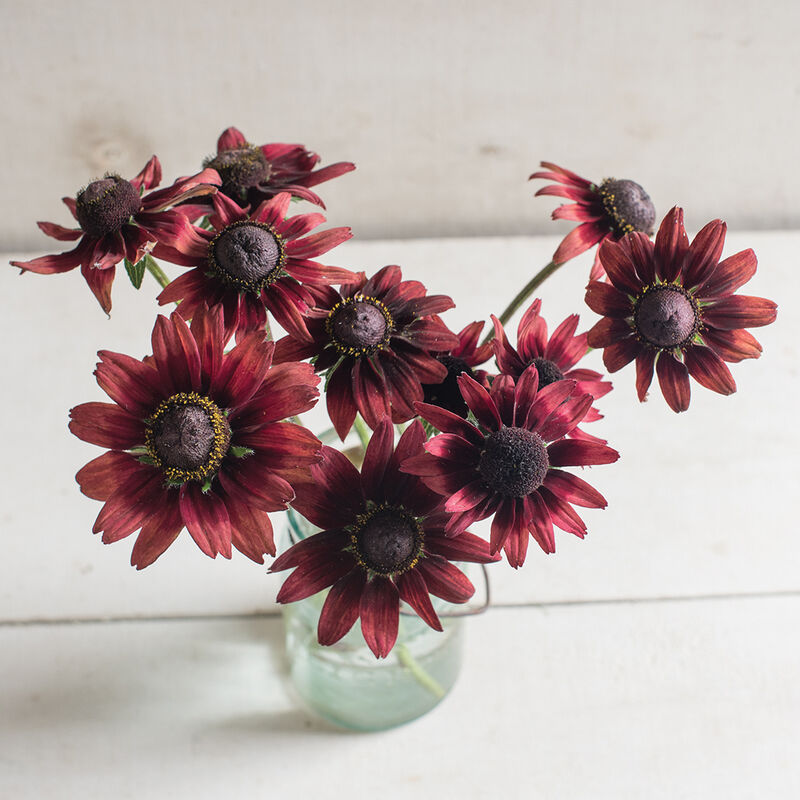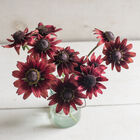Cherry Brandy Rudbeckia Seed
Product ID:1865.111865
Cherry Brandy Rudbeckia Seed
Product ID:1865.111865
First red wine-colored rudbeckia from seed.
Compact plants are outstanding in the garden or in large containers. Combine Cherry Brandy's 3–4" flowers with rudbeckia of other colors, or do a dramatic mass planting for red blooms all summer. Also known as blackeyed Susan and gloriosa daisy. Tender perennial in Zones 9–10.Specs:
DAYS TO GERMINATION:
8-14 days at 68-72°F (20-22°C)SOWING:
Transplant (recommended) - Sow into 72 to 50-cell plug flats 5-7 weeks before planting out. Cover seed very lightly as light is needed for germination. Bottom water or mist to avoid covering seed. Direct seed - Cover seeds very lightly. Pinching not required. Reseeds.LIGHT PREFERENCE:
Sun.PLANT HEIGHT:
Varies.PLANT SPACING:
12-18".HARDINESS ZONES:
Zones 9-10. Best grown as an annual.HARVEST:
Fresh: before blooms are completely open. Dried: when blooms are completely open.SOIL REQUIREMENTS:
Average, well-drained soil. Tolerates poor soil. Heat and drought tolerant once established.USES:
Excellent cut flower. Beds, pots, back of borders, or wild, meadow, and cottage gardens.Note: Rudbeckia requires long days to initiate flowering and will continue to produce some smaller blooms into the fall but on shortened stems of reduced quality. Deadheading increases blooms during summer production.SCIENTIFIC NAME: Rudbeckia hirtaALTERNATE NAMES: Blackeyed susan, gloriosa daisy
Johnny's is committed to your success, every step of the way.
We want you, our customer, to be 100% satisfied with all of our seeds, tools, and supplies.
If anything you purchase from us proves unsatisfactory, we will either replace the item or refund the purchase price.






